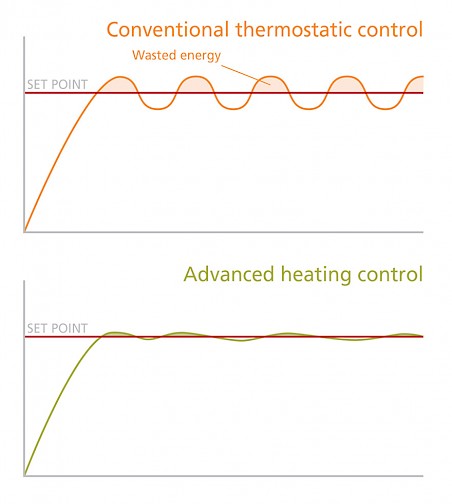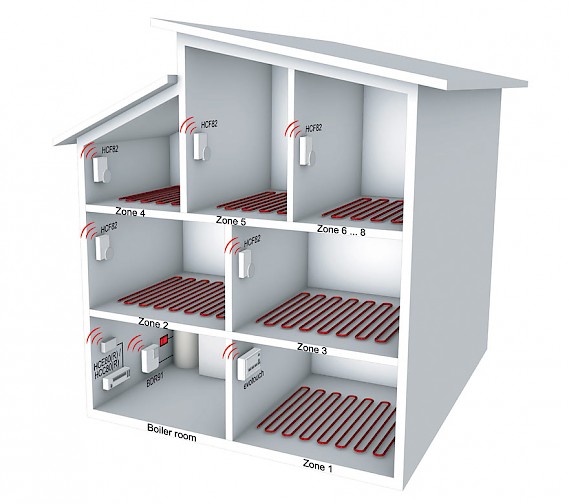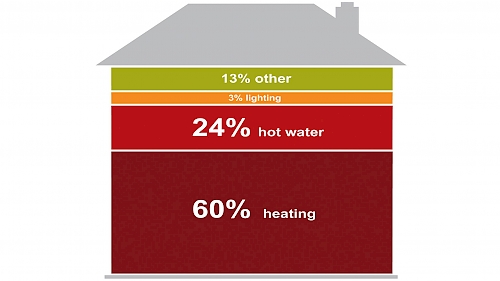Maximise efficiency by only heating areas of your home when you need to
Using advanced heating controls in a house can save perhaps 25% to 30% of the energy used for space heating. How can this possibly be true?
As is often the case the principles are very simple, but the detailed implementation is a little more involved. Basically, we need to ensure that heating systems are only running when they need to so we're not heating parts of the house unnecessarily and rooms are heated to the correct temperature - no more, no less.

Temperature Control
If we look at temperature control, we see that the typical thermostatic control of most houses allows the temperature to wander up and down by one or two degrees. This is because the thermostat has inherent hysteresis. It only switches the heating off when the temperature has already risen above the desired temperature - far too late! Just a one degree decrease in temperature setpoint can save around 10% of energy costs. So if we can control temperature closely we can prevent overheating, increase comfort and use less energy.
Advanced Heating Controls
Our advanced controls can do much better than a thermostat. Rather than the discontinuous on/off switching of a thermostat, we use continuous control. The temperature is measured electronically and compared with the desired temperature. A complex algorithm decides how much heat output is required to offset the heat losses, controlling accurately to the desired temperature.
Zoning
Think about how you use your home. Are parts of your home only used for some of the day? Do you have guest rooms for occasional use? Are these areas heated to the same temperature as the rest of your home when they're not in use?
 Why heat a room you're not using?
Why heat a room you're not using?
A conventional timeclock will often bring your whole house heating on at once, when only a handful of rooms are in use at any one time. Also, rooms often need to be at different temperatures at certain times of the day. For example, a Reception Room should be cool during the daytime, warmer in the evening when you're sitting still and cold overnight.
Such control is not possible using conventional thermostats.
The classic case of heating being left on during a holiday or a short absence has become more common with the rise in popularity of underfloor heating. These systems take so long to heat a cold house that owners are unwilling to wait to be comfortable, so they leave the heating on permanently.
These problems can be solved by Multi-Room Zoning, alongside intuitive and easy-to-use interfaces. The homeowner is able to preset heating times and individual room temperatures, 'guest mode' can be used to liven up the guest rooms for visitors and 'vacation mode' for setting holiday dates.
Other Solutions
Depending on the building and the plant installed, other advanced techniques can also be used. These include 'optimum start' where the heating automatically starts earlier on a cold day or 'weather compensation' for radiators where their water supply runs cooler on mild days.


 Why heat a room you're not using?
Why heat a room you're not using?